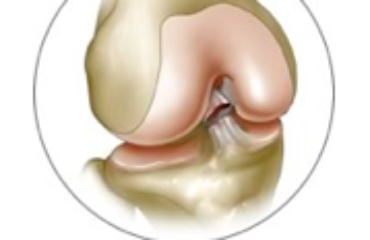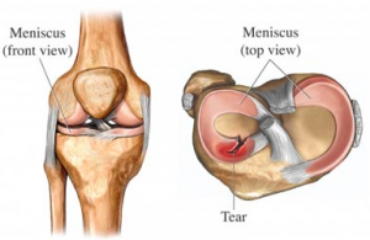A posterior cruciate ligament (PCL) tear occurs is located in the knee area, and this injury can cause damage to both the thigh bone and lower leg regions. This type of injury occurs less often than other ligament tears, such as a tear to the anterior cruciate ligament (ACL).
The PCL is almost twice as strong as the ACL, and it is responsible for stabilizing the knee and providing central axis when the knee rotates. The PCL also prevents the femur from moving too far over the tibia, which will cause damage if this occurs. When the PCL tears, reconstruction is needed to prevent further musculoskeletal conditions.
Reason for Repair and Diagnosis
When a PCL tear does occur, it is most often seen in athletes, motor vehicle accidents, and industrial injuries. If the area of the knee is pushed backwards due to a fall, hyper flexion occurs, or someone suffers an impact from a blow, a PLC tear will often occur.
The Phoenix orthopedic surgeon will determine if only the PLC or other structures have been injured by moving your knee in different directions. The knee doctor in Phoenix can determine how lax or loose the ligament is, which generally allows him to predict the type of injury and the level of the injury. Sometimes, a tear is present only in the PCL, while other times a severe trauma may cause other ligaments to detach. Through this examination, the knee surgeon in Phoenix will determine the type of treatment you’ll need.
Treatment and Surgery
If the injury to your PCL is mild, you may only need to use physical therapy for healing. The physical therapist will help work muscles, such as the quadriceps, to promote healing and prevent the femur from moving too far and causing additional damage. By strengthening the muscles, the knee will heal on its own.
 When the knee injury is more severe, a reconstruction is necessary. An MRI will be able to tell the orthopedic surgeon which method is needed prior to starting the surgery. Before the surgery site is closed, the surgeon will ensure that the area has a rich blood supply flowing to it, which will help speed up the healing process.
When the knee injury is more severe, a reconstruction is necessary. An MRI will be able to tell the orthopedic surgeon which method is needed prior to starting the surgery. Before the surgery site is closed, the surgeon will ensure that the area has a rich blood supply flowing to it, which will help speed up the healing process.
A PCL reconstruction is more complicated than an ACL reconstruction and should only be accomplished by a Fellowship Trained, Board Certified orthopedic doctor in Phoenix. The surgery itself is predominantly performed arthroscopically, and takes 2-3 hours from start to finish.
Recovery
After the surgery is over, you will start a well-constructed rehabilitation problem that is designed to help the area recover. The program is generally started about one week post-operation. If the tear was mild, the program may only need to be continued for a few months. However, in the case of severe tears, you’ll often need to continue with physical therapy throughout your life, as this type of ligament injury will never recover fully.
Rehab time frame for a PCL reconstruction is very similar to that of an ACL reconstruction. For a high level athlete it will take 6 to 12 months to return to activities at a competitive level.


